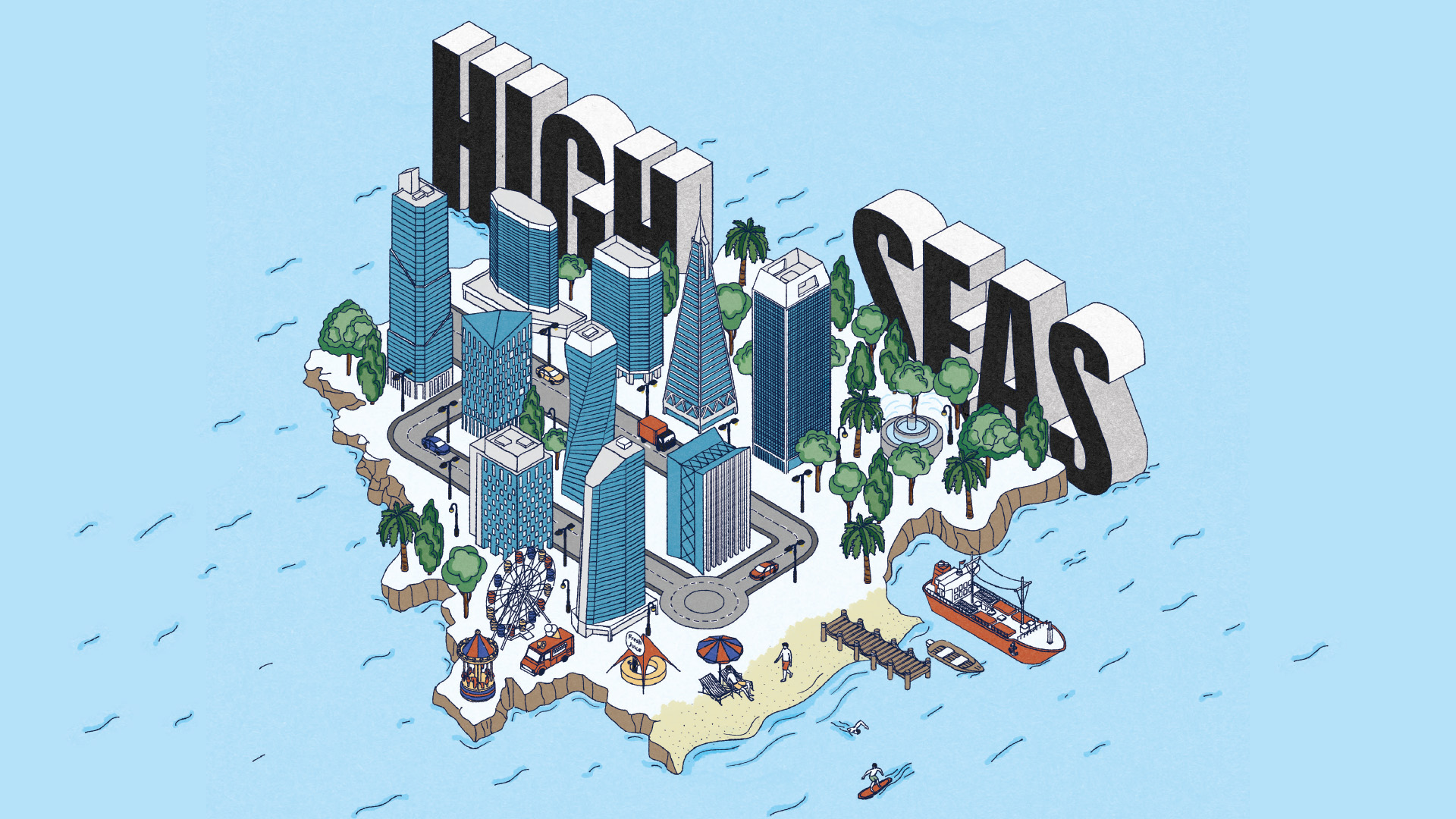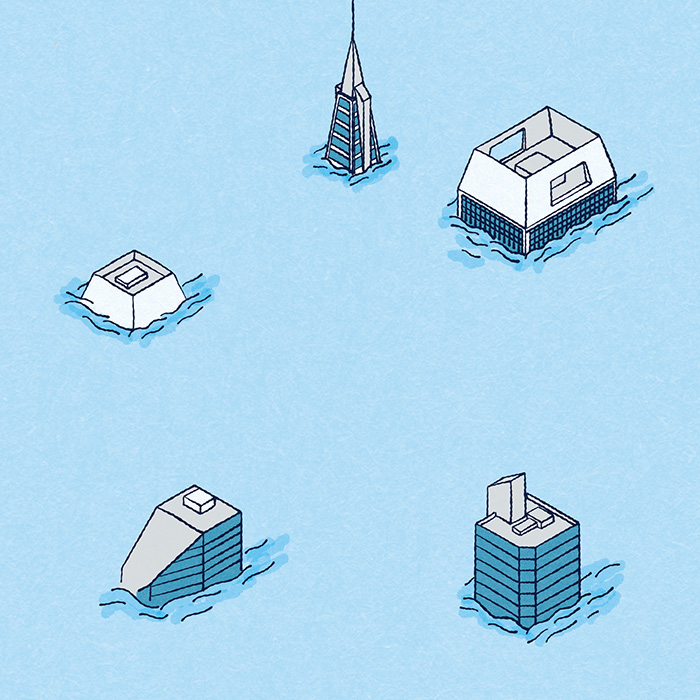Researchers look to nature to pull water from the air›››
High seas
UAE protects its artificial islands and coastline from the effects ofclimate change 23 Sep 2025

The UAE is renowned for its ambitious engineering projects, including five sets of human-made islands. These islands, however, may become vulnerable to rising sea levels caused by climate change. That’s why the UAE is working now to fortify these land masses and more.
Research in the UAE uses remote-sensing data, sea-level projections and coastal hydrodynamic models to assess the impact of rising seas along the country’s coastlines. This research has identified the country’s low-lying and shallow-sloping geography as particularly vulnerable.
“These models allow us to simulate the impacts of rising sea levels under various scenarios,” says Dr. Maryam Rashid AlShehhi, who researches reefs and reef restoration at Khalifa University.
LISTEN TO THIS STORY HERE
Research teams have identified two critical risk areas: displacement and economic instability due to flooding and erosion; and ecosystems and communities in low-lying areas, encompassing natural habitats and developed regions in low-elevation coastal zones.
“These areas face high risks of habitat loss, increased flood frequency and ecological degradation. For example, coral reefs, which rely on stable water conditions, face stress from both rising sea levels and potential increases in turbidity and sedimentation due to coastal erosion. Saltwater intrusion is another concern, as it can compromise freshwater supplies and agricultural productivity in coastal areas, leading to broader socio-economic effects,” AlShehhi tells KUST Review.
 Illustration: Abjad Design
Illustration: Abjad DesignAs the oceans warm due to an increasing global temperature, seawater expands — taking up more space in the ocean basin and causing a rise in water level. The second mechanism is the melting of ice over land (in polar regions and mountains), which then adds water to the ocean. — U.S. National Oceanic and Atmospheric Administration
To combat this, breakwaters have been constructed along the coasts of Ras al Khaimah and Fujairah, and Abu Dhabi is mandating seawalls for upcoming waterfront developments.
But sustainable methods will also be used.
One method involves mangroves, which not only act as a carbon sink, but also protect the coastline.
Their dense biomass and intricate root systems can withstand powerful waves, including those from hurricanes, and thrive in oxygen-poor coastal soils. Mangroves excel at trapping sediment from rivers and oceans, which is both a strength and a vulnerability. While sediment accumulation around their roots helps build land, a disruption in sediment supply leaves the plants vulnerable.
In 2023, Arabian Gulf Business Insight reported that the Environment Agency — Abu Dhabi in partnership with environmental tech company Dendra embarked on a project to plant 27 million mangrove trees in Abu Dhabi by 2030. This is part of the UAE target of 100 million mangrove trees within the same timeline.
“The UAE also uses artificial reefs and ‘living shorelines,’ which combine vegetation, sand and other natural elements to create more resilient and eco-friendly shorelines,” AlShehhi says. “Several projects have been supported on artificial intelligence-driven solutions for real-time monitoring and adaptive responses.”
Other collaborations will address the challenge of rising sea levels. Khalifa University recently worked in conjunction with the Ministry of Climate Change and Environment (MOCCAE) and other universities and organizations to produce a national report on the impact of climate change on the environment.
These areas face high risks of habitat loss, increased flood frequency and ecological degradation.
– Maryam Rashid AlShehhi, assistant professor of
civil & environmental engineering at Khalifa University
Additionally, the UAE Climate Change Research Network, led by MOCCAE, brings together universities, research institutions and government agencies to share data, initiate research and develop policy focused on addressing climate challenges like sea-level rise. Diana Francis of Khalifa University leads the network’s Cluster on Climate Data and Modeling.
These are only a fraction of collaborations in action locally and regionally.
“By enhancing natural defenses, the UAE strengthens its resilience against rising sea levels and extreme weather, which aligns with broader regional efforts to prepare for climate impacts. The UAE’s focus on restoring mangroves, seagrasses and coral reefs promotes biodiversity, supporting marine ecosystems that are critical for fisheries, tourism and ecological balance, which is in line with regional priorities to preserve natural habitats.
The UAE’s sustainable practices set a regional example, encouraging neighboring countries to adopt similar approaches,” AlShehhi says.
More like this: Vertical farms and 3D-printed reefs part of UAE’s plans for food security
Get the latest articles, news and other updates from Khalifa University Science and Tech Review magazine
